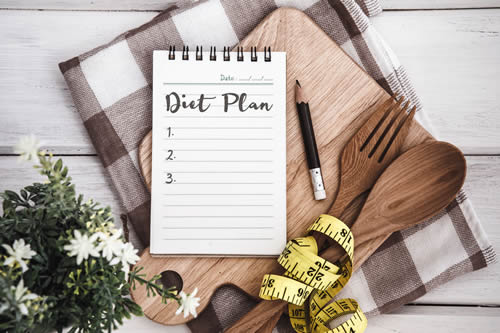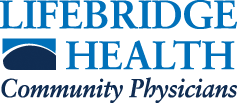Understanding the DASH eating plan will help you start and follow this plan for life.

Controlling Daily Sodium and Calories
To benefit from the proven DASH eating plan, it is important to limit daily sodium levels to 2,300 mg, or 1,500 mg if desired, and to consume the appropriate amount of calories to maintain a healthy weight or lose weight if needed.
Ways to Control Sodium Levels
The key to lowering your sodium intake is to make healthier food choices when you’re shopping, cooking, and eating out.
Tips for Lowering Sodium When Shopping, Cooking, and Eating Out
| Shopping | Cooking | Eating Out |
|---|---|---|
|
|
|
*Examples of convenience foods are frozen dinners, prepackaged foods, and soups; examples of condiments are mustard, ketchup, soy sauce, barbecue sauce, and salad dressings.
Most of the sodium Americans eat comes from processed and prepared foods, such as breads, cold cuts, pizza, poultry, soups, sandwiches and burgers, cheese, pasta and meat dishes, and salty snacks. Therefore, healthier choices when shopping and eating out are particularly important.
Ways to Control Calories
To benefit from the DASH eating plan, it is important to consume the appropriate amount of calories to maintain a healthy weight. To help, read nutrition labels on food, and plan for success with DASH eating plan sample menus and other heart-healthy recipes.
The DASH eating plan can be used to help you lose weight. To lose weight, follow the DASH eating plan and try to reduce your total daily calories gradually. Find out your daily calorie needs or goals with the Body Weight Plannerand calorie chart. Talk with your doctor before beginning any diet or eating plan.
General tips for reducing daily calories include:
- Eat smaller portions more frequently throughout the day.
- Reduce the amount of meat that you eat while increasing the amount of fruits, vegetables, whole grains, or dry beans.
- Substitute low-calorie foods, such as when snacking (choose fruits or vegetables instead of sweets and desserts) or drinking (choose water instead of soda or juice), when possible.
Increasing Daily Potassium
The DASH eating plan is designed to be rich in potassium, with a target of 4,700 mg potassium daily, to enhance the effects of reducing sodium on blood pressure. The following are examples of potassium-rich foods.
Sample Foods and Potassium Levels
| Food | Potassium (mg) |
|---|---|
| Potato, 1 small | 738 |
| Plain yogurt, nonfat or low-fat, 8 ounces | 530–570 |
| Sweet potato, 1 medium | 542 |
| Orange juice, fresh, 1 cup | 496 |
| Lima beans, ½ cup | 478 |
| Soybeans, cooked, ½ cup | 443 |
| Banana, 1 medium | 422 |
| Fish (cod, halibut, rockfish, trout, tuna), 3 ounces | 200–400 |
| Tomato sauce, ½ cup | 405 |
| Prunes, stewed, ½ cup | 398 |
| Skim milk, 1 cup | 382 |
| Apricots, ¼ cup | 378 |
| Pinto beans, cooked, ½ cup | 373 |
| Pork tenderloin, 3 ounces | 371 |
| Lentils, cooked, ½ cup | 365 |
| Kidney beans, cooked, ½ cup | 360 |
| Split peas, cooked, ½ cup | 360 |
| Almonds, roasted, ⅓ cup | 310 |
Meal Planning and Tips
NHLBI meal planning tools and tips can help you follow the DASH eating plan to meet nutritional goals.
Meal Planning Tools
The following tools can help you prepare and choose meals that meet the nutritional goals of the DASH eating plan.
- NHLBI In-Brief: Your Guide to Lowering Your Blood Pressure with DASH: Contains a DASH log for tracking daily food and physical activity levels and a shopping and menu planner.
- Weekly DASH menus: Provides sample daily DASH eating plan menus at 1,500 mg or 2,300 mg daily sodium levels. These menus are based on a 2,000-calorie-per-day diet, and suggested serving sizes may be adjusted if other daily calorie targets are desired.
- Heart-healthy recipes: Provide additional ideas for menu planning.
Tips for Lifelong Success
When changing lifestyle habits, it is normal to slip off track occasionally. Follow these tips to get you back on track.
- Ask yourself why you got off track. Find out what triggered your sidetrack, and restart the DASH eating plan.
- Don’t worry about a slip. Everyone slips, especially when learning something new. Remember that changing your lifestyle is a long-term process.
- Don’t change too much at once. When starting a new lifestyle, try to avoid changing too much at once. Slow changes lead to success.
- Break down the process. Break goals into smaller, simpler steps, each of which is attainable.
- Write it down. Use the Daily DASH Log to keep track of what you eat and what you’re doing while you are eating. You may find that you eat unhealthy foods while watching television. If so, you could start keeping a healthier substitute snack on hand.
- Celebrate success. Instead of eating out to celebrate your accomplishments, try a night at the movies, go shopping, visit the library or bookstore, or watch your favorite TV show.
Source URL: https://www.nhlbi.nih.gov/subscribe/3791
Source Agency: National Heart, Lung, and Blood Institute (NHLBI)
Woodholme encourages a healthy diet and proper nutrition as one aspect of maintaining heart health. The nutrition information and recipes are presented for informational purposes only and are not intended to take the place of one-on-one advice from your doctor. Please follow your personal physician’s recommendations if any recipes, ingredients, or advice found here conflict with what your doctor has advised.

